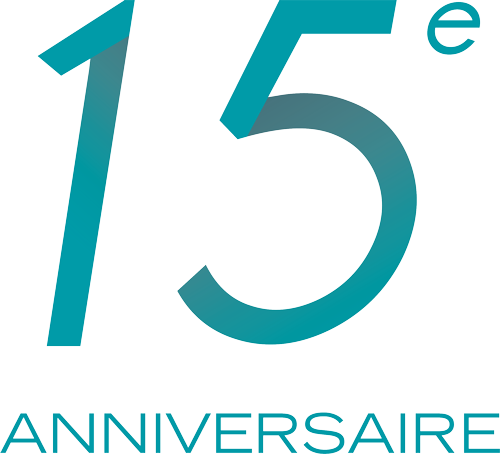Welcome to the borough of Le Sud-Ouest
REALTA, your real estate agency specializing in Montreal’s Sud-Ouest, invites you to explore this authentic corner of Montreal. Let yourself be seduced by its six neighborhoods, where history blends with modernity in a friendly atmosphere. Our team of experienced and passionate brokers know this borough inside out, and have been accompanying buyers and sellers for years. Their verdict is clear: the Sud-Ouest is an ideal place to live, stroll and thrive.

Le Sud-Ouest: Where history meets urban innovation
Located just minutes from downtown Montreal, the Sud-Ouest embodies the perfect blend of a rich industrial past and contemporary creative dynamism. Covering 15.7km², it is bordered by verdant Angrignon Park, prestigious Westmount, the boroughs of Côte-des-Neiges-Notre-Dame-de-Grâce, Ville-Marie and Verdun, while the Canal de l’Aqueduc and, in part, the majestic St. Lawrence River mark its southern limits. Some 93,000 residents live here, in six distinctly different neighborhoods.
At the heart of the borough winds the Lachine Canal, a veritable social and economic catalyst in the late 19th and early 20th centuries. Rising from the ashes in the 21st century, it has become a popular destination for residential, commercial and leisure development. Across the Sud-Ouest, former factories transformed into elegant lofts rub shoulders with century-old houses and plexes, while avant-garde architectural projects, such as The Bridge near the Victoria Bridge, enrich this fascinating urban tableau.
This remarkable transformation attracts a population as diverse as it is dynamic: young professionals in search of authenticity, families seduced by the balance between urban life and nature, and savvy investors all find their niche here. All are attracted by generous green spaces, a neighborhood atmosphere that’s both preserved and vibrant, and a real estate market that’s still affordable. Artistically animated alleyways and convivial terraces create the unique atmosphere that makes the Sud-Ouest so charming – a living testimony to Montreal’s 21st-century urban renaissance.
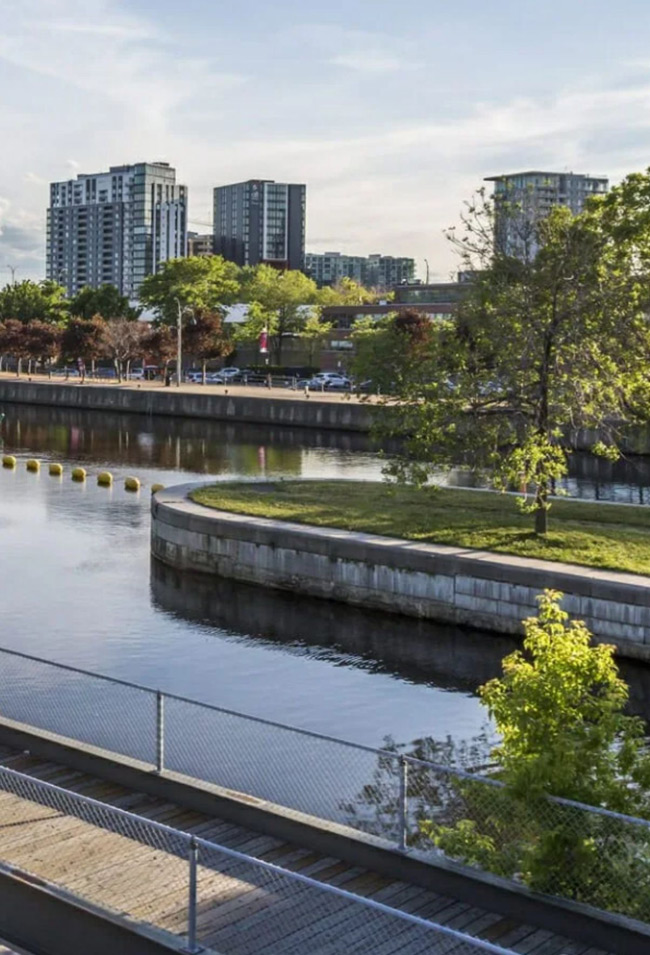

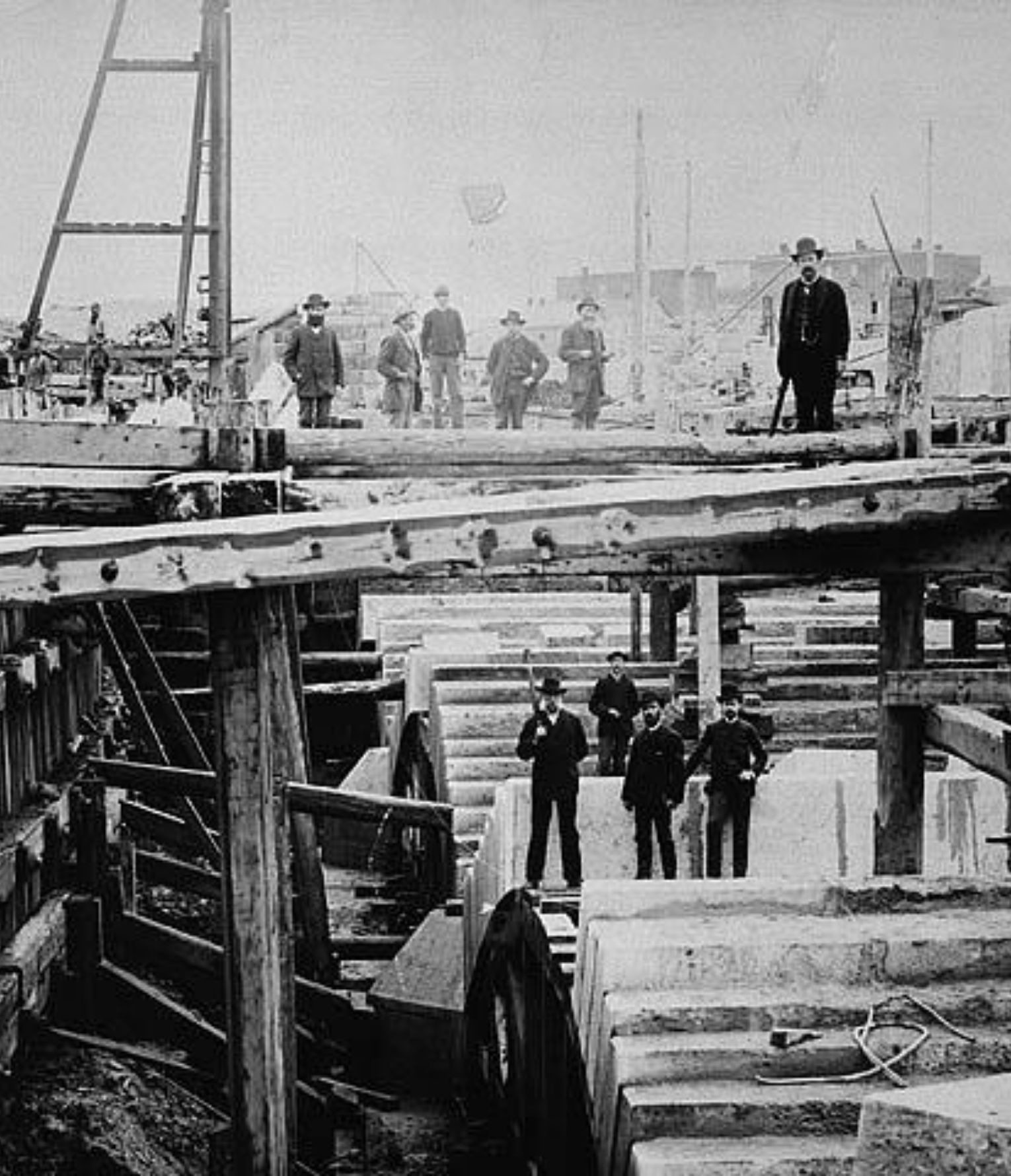
For his story
Origins and agricultural development (before 1825)
From the time it was granted to the Sulpicians in 1663, the Sud-Ouest territory was mainly devoted to agriculture. The land, organized into hillsides perpendicular to the St. Lawrence River, was farmed according to the seigneurial model. As early as 1686, artisanal activities, such as the tanneries of Saint-Henri-des-Tanneries, were established, marking the beginnings of a diversified economy.
Industrialization and urbanization (1825-1945)
The opening of the Lachine Canal in 1825 marked a decisive turning point in the industrialization of the area. Enlarged in the 1840s, the canal attracted numerous factories thanks to its hydraulic potential and its role in transporting goods. Infrastructure development, such as the Montreal & Lachine Railway (1847) and the Victoria Bridge (1859), accelerated this growth. Around these industrial hubs, working-class villages sprang up, including Griffintown, Sainte-Cunégonde and Saint-Henri. During this period, the Sud-Ouest established itself as one of Canada’s leading industrial centers. A diverse workforce – made up of Irish (major players in the construction of the canal and Victoria Bridge), French-Canadians, African-Americans and Caribbeans – settled here, shaping the cultural identity of neighborhoods like Little Burgundy and Pointe-Saint-Charles.
Deindustrialization and revitalization (1945 to present)
After the Second World War, with the opening of the St. Lawrence Seaway in 1959 and the closure of the Lachine Canal in 1970 (having become obsolete in the face of larger boats and the impossibility of widening its banks), the Sud-Ouest experienced a gradual industrial decline. Numerous factories closed, resulting in a massive loss of jobs (an unemployment rate of 19.8% in 1986) and a reduction in population by almost half, particularly between 1966 and 1986, when it dropped from 111,096 to 68,180 inhabitants, according to Statistics Canada data.
By the end of the 20th century, however, a new dynamic was emerging. The reopening of the canal for recreational use in 2002 and the conversion of former factories into lofts and cultural spaces (such as the Saint-Gabriel locks) brought new life to the area. Today, the Sud-Ouest combines industrial heritage and modernity, attracting a young population and innovative businesses, while retaining its multicultural heritage. As a result, the population has grown from 67,929 in 1991 to around 93,000 in 2024.
Neighborhoods
Today, the borough is home to several emblematic neighborhoods, including Saint-Henri, Griffintown, Little Burgundy, Pointe-Saint-Charles, Côte-Saint-Paul and Émard. These neighborhoods have preserved their unique identity while adapting to contemporary urban change. Historic landmarks such as the Atwater Market and the Corona Theatre (now Théâtre Banfield) still bear witness to the Sud-Ouest’s rich past. For many, this borough perfectly embodies Montreal’s industrial and social history, while representing a successful model of urban revitalization.

Saint-Henri
Compared to Montreal’s Brooklyn, Saint-Henri has been named one of the world’s hippest neighborhoods by the webzine Time Out. This emblematic neighborhood, rich in a vibrant industrial past, today embodies a model of urban revitalization. Ranked among the best places to live in Montreal (at 2ᵉ position according to Journal Métro) and 13ᵉ coolest neighborhood on the planet in 2024 (again according to Time Out), Saint-Henri never ceases to seduce residents and visitors alike.
Sandwiched between Atwater Avenue to the east, the Lachine Canal to the south, Highway 15 to the west and Westmount and Notre-Dame-de-Grâce to the north, Saint-Henri is home to a community of some 17,000 people. As the webzine Tastet points out, “strolling through its streets is an opportunity to admire distinctive architecture and enjoy green oases, such as Saint-Henri, Lachine Canal and Sir-Georges-Étienne-Cartier parks”. The proximity of the Lachine Canal offers privileged access to bicycle paths and green spaces, a major asset for outdoor activities.
The hustle and bustle is concentrated around Notre-Dame Street, a bustling commercial artery where quality restaurants and trendy boutiques rub shoulders. A few steps away, the Atwater Market attracts gourmets in search of fresh produce. According to the SDC Les Quartiers du Canal, the district boasts some 214 businesses, mainly in the service and gastronomy sectors, making Saint-Henri a true local economic powerhouse.
The social fabric is energized by committed community organizations, such as the Centre Saint-Henri, which offers activities for all ages. Easily accessible via the Lionel-Groulx and Place-Saint-Henri metro stations, the neighborhood harmoniously blends historic charm with modern conveniences, while navigating the challenges of gentrification with resilience.
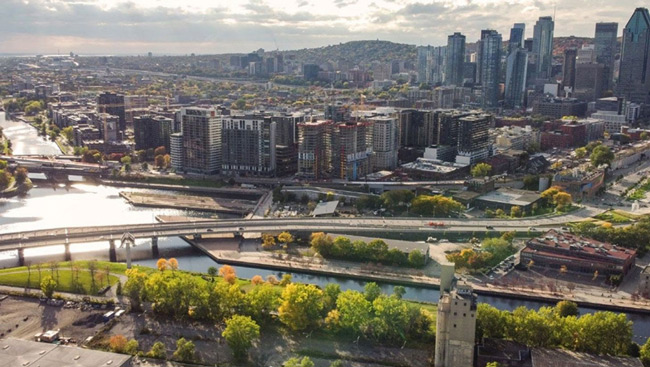
Griffintown
Born in the early XIXᵉ century under the impetus of Mary Griffin, Griffintown also bears witness to Montreal’s urban metamorphosis. Once a working-class neighborhood, punctuated by the industrial activity of the canal, it has evolved into a dynamic and highly sought-after urban hub.
Its architectural landscape reflects this evolution: former warehouses and factories, such as the Darling Foundry, sit harmoniously alongside elegant residential towers. Ottawa and Peel streets, once industrial arteries, are now pedestrian and cyclist-friendly spaces. As for the Lachine Canal, today it forms a green corridor much appreciated by residents.
Griffintown’s ambiance combines a trendy urban spirit with preserved historic charm. Its predominantly young, educated and active population, with incomes above the Montreal average, animates a vibrant ecosystem of trendy restaurants, art galleries and cultural events. The École de technologie supérieure (ÉTS) plays a key role in this dynamic, stimulating innovation and generating jobs.
The district has experienced one of Montreal’s fastest population growth rates, reaching a density of 10,416 inhabitants/km² in 2020 – more than double the city’s average. This explosion is due in particular to the proliferation of condos and condominiums, most of which are located in large buildings constructed after 2000, which now dominate the landscape.
The commercial offer, centered on restaurants, local services and specialty stores, meets everyday needs. While residents enjoy these local amenities, they also turn to downtown and Old Montreal for more specific services.
In short, Griffintown perfectly embodies the contemporary urban renaissance: a neighborhood that celebrates its past while resolutely embracing the future.

Petite-Bourgogne
Little Burgundy is an ideal residential choice for those seeking a vibrant neighborhood just minutes from downtown Montreal. Bordered by Atwater Avenue to the west, Saint-Antoine Street to the north, Guy Street to the east and the Lachine Canal to the south, this neighborhood offers a rich and pleasant living environment. The result of the merger of the former faubourg Saint-Joseph and the village of Ste-Cunégonde, it gradually evolved from an agricultural vocation to an industrial identity after the opening of the Lachine Canal in 1825.
A true multicultural crossroads, Little Burgundy is home to 38% of its residents of immigrant origin, representing over 83 ethnic communities – nearly half its population. The cradle of Montreal jazz, the neighborhood has seen the birth of such legends as Oscar Peterson and Oliver Jones, while also hosting such iconic institutions as the Negro Community Center and Union United Church. This cultural effervescence has earned it the nickname of the Harlem of the North.
Today, Notre-Dame Street West, once renowned for its antique shops, is a magnet for artisanal boutiques and renowned restaurants. The Atwater Market remains a gastronomic must, attracting residents and visitors alike. Finally, Lionel-Groulx and Georges-Vanier metro stations guarantee optimal accessibility.
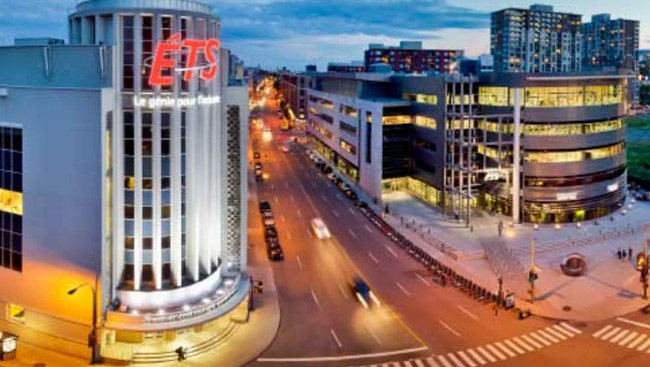
Pointe-Saint-Charles
Founded in 1654, Pointe-Saint-Charles is one of Montreal’s oldest neighborhoods. Located between the Lachine Canal, Highway 15, the St. Lawrence River and the port, it borders Little Burgundy and Griffintown. Once an industrial heartland and a hub of Irish immigration from 1848 onwards, today it’s seductive for its working-class heritage and strong community life. A leisurely stroll reveals a picturesque landscape, where duplexes typical of the 1860s to 1910s stand side by side with modern lofts built in former factories. With a population of 16,208 (19% of the Sud-Ouest’s total population), the neighborhood offers a predominantly residential environment (66%), marked by a diversity of housing types: apartments, cooperatives (27%), historic houses and an increase in condos since the 2000s. Young people aged 25 to 39 account for almost a third (32%) of the population.
Among its attractions is the Lachine Canal, redeveloped as a green space and bicycle path. Rue Wellington, a lively commercial thoroughfare, attracts visitors with its cafés, bakeries, microbreweries and local boutiques. The district’s economy is underpinned by some 270 service and gastronomy companies, as well as institutions such as the École de technologie supérieure de Montréal and the Atwater Market, both located nearby. A solid network of some 50 community organizations, including the Pointe St-Charles Community Clinic, a veritable institution, supports residents.
A popular destination for young professionals and families, Pointe-Saint-Charles combines proximity to downtown, accessible services and unique architectural charm.

Côte-Saint-Paul
Originally a Sulpician agricultural concession in the 17th century, Côte-Saint-Paul became a working-class neighborhood with the rise of the Lachine Canal, before its annexation to Montreal in 1910. Bordered by Briand Street (to the west), the Lachine Canal (to the north), Atwater Avenue (to the east) and the Aqueduct Canal (to the south), it borders Ville-Émard, Saint-Henri and Verdun.
Renowned for its architectural heritage, with buildings erected between 1887 and 1911, Côte-Saint-Paul is a predominantly residential neighborhood of multiplexes, condos and single-family homes. Shops are concentrated mainly on avenue de l’Église and boulevard Monk. Its 18,235 residents enjoy a peaceful, family-friendly atmosphere, attracting families and young professionals alike.
The local economy is based on small businesses (services and shops) and the Canal industrial zone. École secondaire Honoré-Mercier is a major employer. The Centre social d’aide aux immigrants and various artistic initiatives enrich community life. For recreation, the Centre Gadbois, Centre de loisirs Monseigneur-Pigeon and Parc de la Vérendrye offer a wide range of sporting activities.

Émard
This small neighborhood in southwestern Montreal is one of the city’s best-kept secrets. Born in the early 20th century to the industrialization of the Lachine Canal and annexed to Montreal in 1910, Émard proudly retains its working-class soul. Just six kilometers from downtown, Émard, like the rest of the borough, offers a perfect balance between urban accessibility and residential tranquility.
As you stroll along its mature tree-lined streets, you’ll discover an architectural landscape of typical Montreal duplexes and 1940s veterans’ homes. The 97-hectare Angrignon Park, with its 1.1-kilometre artificial lake and shaded paths, is the jewel in the crown of the district, a delight for walkers and cyclists alike.
With a population of 15,000, mostly French-speaking (57%), Émard is enriched by a growing cultural diversity (30% allophones and immigrants). Monk Boulevard, the main thoroughfare, is a testament to this richness, with its ethnic businesses, friendly cafés and local boutiques that come alive especially in summer.
Don’t miss the Bain Émard, an architectural relic from 1914 that recalls the days of working-class public baths, or the Marie-Uguay library, with its varied cultural program. The Monk and Angrignon metro stations provide efficient connections to the rest of the city. Émard awaits you with its urban village atmosphere, where neighbors know each other and mutual aid remains an important value.
The borough in figures
- Population: 93 088
- Average age: 36 years
- Surface area: 15.7 km²
- Persons per household: 1.9 persons per household on average
- Renters: 65%
- Owners : 35%
- Percentage of people aged 25 to 64 with a college or university diploma: 60%.
- Percentage of residents who prefer public transit on a daily basis: 42%.
- More than 40,000 people are employed, according to the latest available figures (2016).
- The self-employed account for 11% of the working population aged 15 and over.
- Home is the place of work for 10% of the working population.
- Languages spoken: 56% French
30% English
14% other languages
- 93 parks and green spaces
- 6 community gardens
- 7 subway stations
- 1 house of culture
- 4 libraries
- 3 indoor pools
- 7 water games
- 2 children’s pools
- 11 outdoor rinks
- 3 arenas
For its commercial streets
Explore the lively and diverse commercial arteries that bring life to Montreal’s Le Sud-Ouest borough. More than just streets, these are authentic meeting places, each reflecting the soul of its neighborhood. You’ll discover a unique mix of local shops, trendy restaurants and specialty boutiques, offering residents and visitors a stimulating and rewarding shopping experience just steps from home.
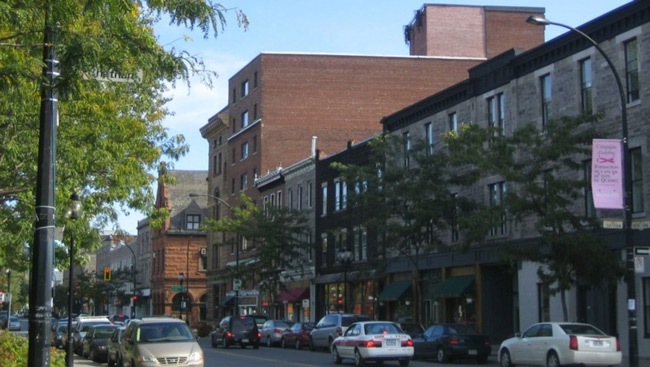
Notre-Dame Ouest street
Traced as far back as 1672, Notre-Dame Street West, one of Montreal’s oldest thoroughfares, is the vibrant heart of the Saint-Henri, Little Burgundy and Griffintown districts. Stretching some 3 km, steeped in a rich industrial heritage and alive with residential and commercial renewal, this street is the soul of the Sud-Ouest.
Today, it vibrates to the rhythm of trendy boutiques, lively restaurants and trendy cafés, embodying the spirit of the Sud-Ouest, where colorful murals meet soothing green spaces at your fingertips and a burgeoning gastronomic scene. Widened sidewalks, reserved lanes and a friendly atmosphere invite you to stroll or bike, revealing a fascinating new face of Montreal at every turn. It has become a must-see destination, showcasing the city’s multicultural and dynamic essence.

Monk Boulevard
Monk Boulevard, a landmark artery in Montreal’s Ville-Émard district, stretches 1.9 km between Notre-Dame Street and de La Vérendrye Boulevard. This north-south thoroughfare, named in honor of local development pioneer Frederick Debartzch Monk, has been a commercial and social mainstay since 1911.
The neighborhood vibrates with a unique atmosphere often described as family and village-like, with a tranquility and greenery that’s much appreciated. Beautification initiatives, supported by the Société de développement commercial Monk, and festive events, such as the Sentier de lumières, enhance its appeal. Today, the boulevard vibrates with renewed energy, reflected in a growing craze for a variety of new retailers and a younger clientele attracted by affordable rents and accessibility via the metro.

Center Street
A historic thoroughfare in Pointe-Saint-Charles since 1861, Centre Street stretches some 1.6 km from the Atwater traffic circle to rue Wellington, crossing a significant part of the district and bordering the Saint-Henri and Little Burgundy sectors at its western end. The street offers a mix of residential, commercial and community spaces that reflect the history and revitalization of these areas. Unique in Montreal, it is home to a dual parish core, with Saint-Gabriel Church, serving the English-speaking Irish Catholic community, and Saint-Charles Church, for the French-speaking community, just 60 meters apart. Its recent commercial renaissance, spurred by resident investment, fosters a harmonious cohabitation between century-old establishments and new convenience stores, revitalizing neighborhood life.
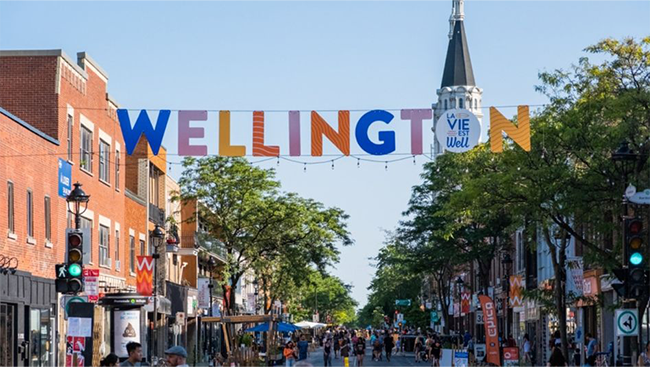
Wellington Street
Rue Wellington, the vibrant commercial heart of Pointe-Saint-Charles in Verdun, is 6 km long. Formerly known as “chemin de la rivière Saint-Pierre”, then “chemin de Lachine”, it was renamed around 1844 in honor of the Duke of Wellington. In Pointe-Saint-Charles, it offers a lively mix of local shops (grocery stores, medical clinics and pharmacies) and popular restaurants such as Mollo Café-Gelato and Boom J’s Cuisine. It’s also home to the Action Santé organization and the Marie-Victorin park. Another feature: the neighborhood’s commercial streets, including this one, feature a high concentration of businesses on the first floor of residences. In short, Wellington is a friendly thoroughfare offering the essentials, just a few minutes from the main thoroughfares for a wider choice.

Saint-Jacques Street
Saint-Jacques street is a major artery in the city, running east-west through several boroughs, including Ville-Marie (Old Montreal), Le Sud-Ouest, Côte-des-Neiges-Notre-Dame-de-Grâce and Lachine. It opened in 1672 and was named in honor of Jean-Jacques Olier de Verneuil, founder of the Sulpicians. Known as Upper Lachine Road until the mid-20th century, rue Saint-Jacques enriched the commercial offerings of the southwest. In the small section between Atwater and Sainte-Marguerite, the street is home to a variety of businesses, from convenience stores to restaurants and boutiques, while being influenced by residential growth in the surrounding neighborhoods. Financial support programs and real estate development projects offer promising prospects for strengthening its economic role while meeting the needs of an evolving population.
Why buy a property in Le Sud-Ouest Borough?
It’s a question many future homeowners ask, and the answer lies in the quality of life this area offers. Beyond the general convenience found in Montreal, the Sud-Ouest is distinguished by a unique convergence of factors that make it a most judicious real estate investment.
Imagine a neighborhood where services and shops are right on your doorstep, with lively thoroughfares like Notre-Dame Street West, teeming with grocery stores, pharmacies, restaurants, cafés and independent boutiques of all kinds. Add to that an efficient public transit system and quick access to major highways, and you’ve got a city that’s easy to get around. The Sud-Ouest is also a breath of fresh air in the heart of the city, with the emblematic Lachine Canal and its lush green bike paths, offering the perfect balance between urban life and natural spaces. Choosing Le Sud-Ouest is all this and much more.

For its educational services
One of the most important services to consider for young families is certainly the proximity of early childhood centers, primary and secondary schools, public CEGEPs and private institutions. As for the public network in Le Sud-Ouest, there are 11 French-language elementary schools (Charles-Lemoyne, Coeur-Immaculée-de-Marie, De la Petite-Bourgogne, Dollard-des-Ormeaux, Jeanne-Leber, Ludger-Duvernay, Marie-de-l’Incarnation, Notre-Dame-du-Perpétuel-Secours, Saint-Jean-de-Matha, Saint-Zotique and Victor-Rousselot) and one English-language school (St. Gabriel Elementary).
The area also boasts 2 French-language high schools (École secondaire Honoré-Mercier and École secondaire Saint-Henri) and one English-language school (James Lyng High School). Nearby, young people can pursue their post-secondary studies at Cégep André-Laurendeau, located not far away in the neighboring borough of LaSalle. The Sud-Ouest is also home to the École des métiers du Sud-Ouest-de-Montréal, a vocational training center offering specialized programs such as jewellery-making, building design, surveying and topography, industrial design, elevator mechanics and electromechanics for automated systems.
Two other types of projects delight young people and their parents: Les Loisirs du Sud-Ouest (LCSO), which offers children aged 5 to 16 a vast program of day camps and diversified annual activities, and the Centre récréatif, culturel et sportif St-Zotique (CRCS), which offers a diversity of leisure activities (sports, outdoor, environmental, cultural and community action) for all clienteles: young people, teenagers, adults and seniors. The borough also boasts a number of daycare centers and CPEs for toddlers, spread throughout its various neighborhoods, including Pointe-Saint-Charles, Little Burgundy, Saint-Henri, Émard, Côte-Saint-Paul and Griffintown.

For its cultural life
Do you like shows and other cultural events? You won’t be disappointed here! Obviously, the leader here is the Maison de la culture Marie-Uguay. Located at 6052 Monk Blvd., this institution has established itself as a cultural pillar of the Sud-Ouest, offering a varied program that includes dance, theater, concerts, visual arts exhibitions and cinema, often free of charge. It recently celebrated its 40th anniversary and was awarded GOLD certification for its commitment to eco-responsibility as an eco-performance venue.
The Sud-Ouest also boasts other major cultural venues, such as the Centre culturel Georges-Vanier, located in the heart of Little Burgundy. This non-profit organization promotes artistic and cultural practices through courses, workshops, exhibitions and cultural events. It reflects the multicultural diversity of the area with diverse programming and rental spaces for artistic activities. Among the must-see cultural attractions is Maison Saint-Gabriel, a museum and historic site located in Pointe-Saint-Charles. This magnificent three-hundred-year-old building is one of the finest examples of traditional New France architecture, and features exhibitions on the history of Montreal and Quebec, including the Filles du Roy and rural life from the 17th to 20th centuries, with guided tours in period costume.
For art lovers, the Arsenal art contemporain, located in Griffintown, is a major art center housed in a former 19th-century shipyard. With its vast exhibition spaces totalling 80,000 sq. ft., dedicated to exhibitions by Canadian and international artists. It also supports the creative process through a residency program.
The Sud-Ouest also boasts four libraries (Saint-Henri, Marie-Uguay, Saint-Charles, Réjean-Ducharme), offering not only varied collections but also a year-round program of cultural activities. And let’s not forget the emblematic jewel that is the Lachine Canal, a national historic site offering a 14-kilometre multi-purpose trail, a waterway, industrial remains and numerous cultural activities.
The Répertoire Culturel du Sud-Ouest lists more than 80 local artists, organizations and venues, testifying to the creative effervescence of this area of Montreal in full renaissance.
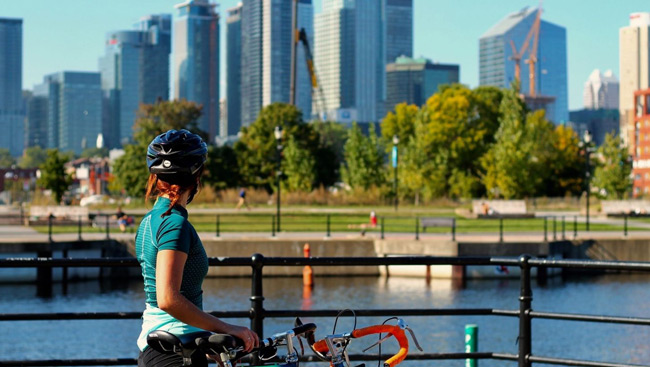
For sports and leisure
All summer long, young and old alike will be taking part in a host of fun activities and outdoor shows in the borough’s parks and public squares. On the program: a variety of sports and leisure activities, outdoor reading, outdoor shows and exhibitions at various cultural venues. One of the most popular sports activities is certainly cycling, with the famous Lachine Canal bike path, ranked among the world’s most beautiful urban circuits. This multi-purpose trail stretches 14.5 km from the Old Port to the Lachine Museum Road and is accessible year-round, with snowshoeing and cross-country skiing available in winter.
For the enjoyment of youngsters and their parents, the Sud-Ouest borough boasts 4 indoor pools, including the one at Centre Gadbois and Parc Saint-Henri, as well as several outdoor pools, such as those at Parcs Sir-George-Étienne-Cartier and Ignace-Bourget. There are also 2 outdoor paddling pools and 7 water games in the various neighbourhoods. In winter, the borough’s parks are home to 12 outdoor skating rinks in seven parks, including parc Gédéon-De Catalogne, parc Ignace-Bourget, Carré d’Hibernia, parc Campbell Ouest, parc Le Ber and parc Vinet. In addition, the two arenas in the Gadbois recreational complex (Georges-Mantha and Sylvio-Mantha arenas) offer a wide range of free skating time slots.
The Centre Gadbois, one of Montreal’s largest sports centers, is a multi-purpose facility housing some 15 sports clubs and associations offering a wide range of activities: soccer, judo, basketball, boxing, karate, fencing, futsal, weightlifting, archery, volleyball and many more. The Little Burgundy sports center completes the offer with its own facilities. For outdoor enthusiasts, in addition to the Lachine Canal, the borough is also close to Angrignon Park, which, with its vast green spaces, offers an ideal place for walking, jogging and relaxing in nature.
Other sites easily accessible from the southwest offer a wide range of outdoor activities: Parc Jean-Drapeau, the Old Port of Montreal and Mount Royal, where you can enjoy a variety of activities depending on the season.

For gourmet destinations
Living in Montreal’s Sud-Ouest offers residents the opportunity to improvise as tourists in their own neighborhood for an afternoon or evening. Then set off to discover its cafés, patisseries, restaurants and other culinary destinations to enjoy a good time with friends or family. Here are just a few of the borough’s popular eateries:
- Joe Beef: Located in Little Burgundy at 2491 Notre-Dame Street West. Internationally acclaimed, this restaurant offers French market cuisine inspired by the Lyonnaise tradition with a Montreal twist.
- Liverpool House: at 2501 Notre-Dame Street West, this resto offers the charm of a seaside cottage. The menu features market-fresh produce, Old World wines and the perfect atmosphere for enjoying gin and tonics in a clubhouse setting.
- Le Vin Papillon: located at 2519 rue Notre-Dame Ouest, this establishment is renowned for its selection of natural wines and inventive cuisine, making it a must for lovers of good food and good wine.
- Elena: Italian restaurant located at 5090 Notre-Dame Street West. Specialties include wood-fired pizzas with natural sourdough, homemade pasta and seasonal dishes. Known for its warm ambience and minimalist decor.
- Arthurs Nosh Bar: Located at 4621 Notre-Dame Street West, Arthurs offers revisited Jewish classics served with a generous helping of family pride. Open from 9 a.m. to 3 p.m. Monday to Sunday, this restaurant is particularly popular for its brunches, which draw crowds from the neighborhood and beyond.
- Satay Brothers: At 3721 Notre-Dame Street West, Satay Brothers is considered one of the best Asian restaurants in Montreal, serving Southeast Asian specialties, including Singaporean and Malaysian, in Saint-Henri since 2010.
- Café Saint-Henri, an artisan roaster located at 3632 Notre-Dame Street West, offering specialty coffees and a convivial space for lovers of good coffee.
And the famous Atwater Market, open year-round and ranked among Montreal’s most beautiful buildings. This public market is home to excellent butchers, cheesemongers, bakers and fruit and vegetable shops, offering fresh, local produce to delight residents and visitors alike. During the summer season, enjoy the Pôle des Saveurs, focused on innovative and delicious fast food.
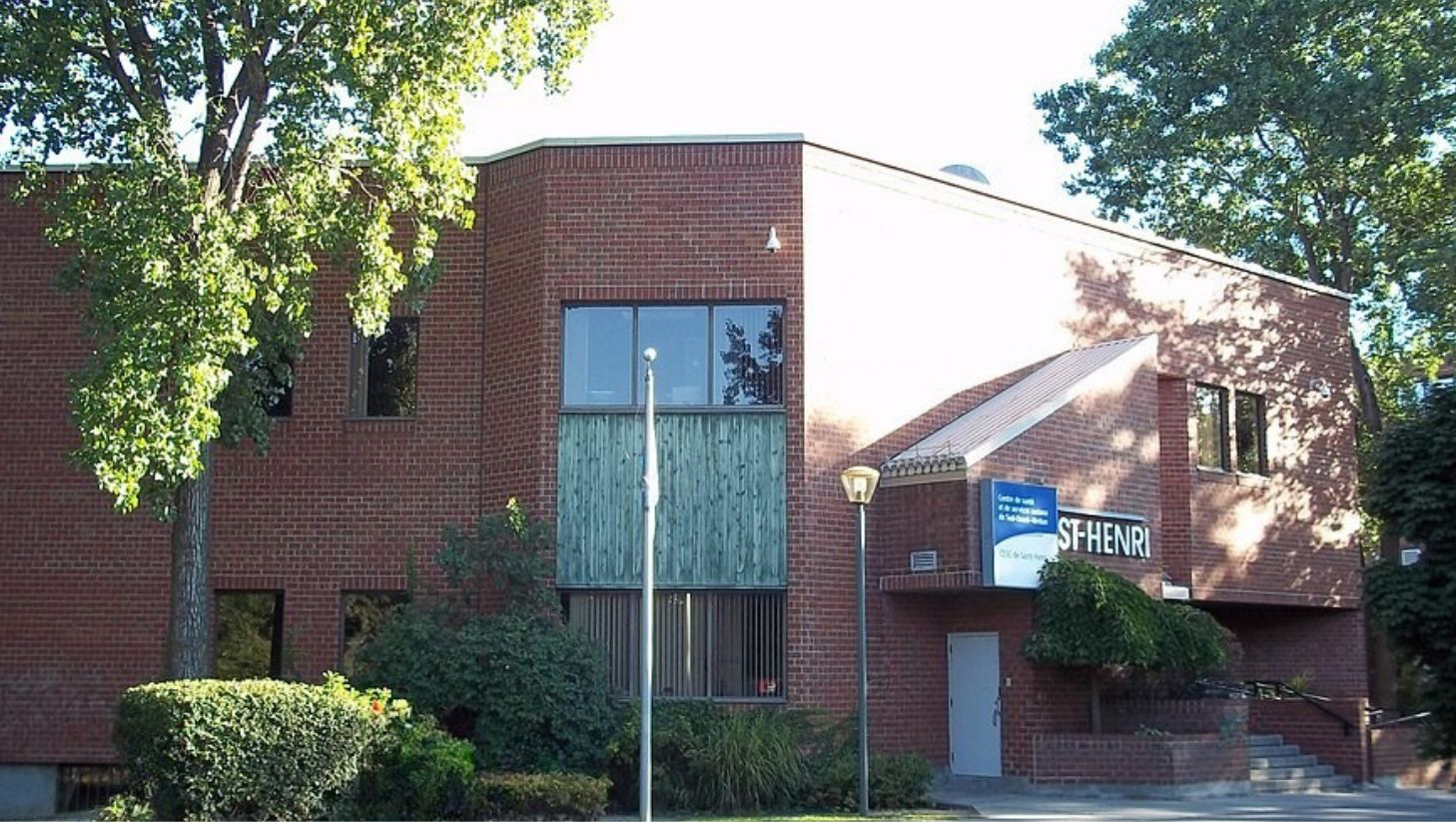
For nearby medical services
Montreal’s Sud-Ouest benefits from a comprehensive healthcare network, with facilities located in the borough itself and in neighboring areas. Within the Sud-Ouest, we find the CLSC de Saint-Henri, located within the Centre d’hébergement de Saint-Henri, which offers essential front-line services and is also home to the CIUSSS Centre de services Sud-Ouest-Verdun.
For hospital care, residents can count on Hôpital de Verdun, located in the neighboring borough of Verdun (4000, boulevard LaSalle). Although outside the boundaries of the Sud-Ouest, this major CIUSSS du Centre-Sud-de-l’Île-de-Montréal facility is easily accessible and is the hospital of choice for area residents, with a 24-hour emergency service and a full range of medical specialties. The network of CLSCs surrounding the Sud-Ouest also includes the CLSC de Ville-Émard (6161, rue Laurendeau), which, although named after a Sud-Ouest neighborhood, technically borders the borough of LaSalle. There’s also the CLSC de Verdun (400, rue de l’Église), located in the borough of Verdun. These facilities offer medical consultations, nursing care, pregnancy follow-up and psychosocial services.
When it comes to primary care, the Clinique Médicale du Sud-Ouest, a Groupe de Médecine Familiale (GMF) located at 4475 rue Bannantyne in Verdun, is another pillar of the local healthcare system easily accessible to Sud-Ouest residents. With over 35 family physicians and a multidisciplinary team, it offers consultations with or without appointment, as well as specialized services.
The area is also well served by pharmacies, with several branches of major chains such as Jean Coutu on Notre-Dame Street West, in the heart of the Sud-Ouest, as well as Uniprix, Pharmaprix and Brunet pharmacies in the borough and on its borders.
This care network is complemented by a number of independent healthcare professionals scattered throughout the borough: dentists, optometrists, physiotherapists, chiropractors and psychologists, as well as local services specializing in addiction and mental health.
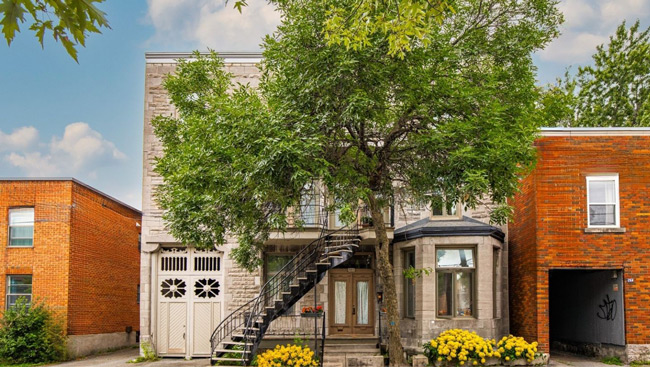
For its dynamic real estate market
The Sud-Ouest borough is one of Montreal’s most rapidly changing areas. Comprising six distinct neighborhoods, as described above, it offers a diverse real estate panorama that attracts investors and future homeowners alike. Each neighborhood has its own unique characteristics and real estate opportunities.
Griffintown, a former industrial district, has undergone a complete metamorphosis with high residential densification. Most of the high-end condos and lofts are located in converted factories, attracting a young, professional clientele. Many of these condos offer breathtaking views, including of the river, the Lachine Canal and downtown Montreal.
Saint-Henri offers a mix of renovated plexes, single-family homes and modern condo projects, particularly popular along the Lachine Canal.
Little Burgundy and Pointe-Saint-Charles still offer interesting opportunities for buyers looking for authenticity, with plexes (duplexes, triplexes) sometimes requiring renovation, but at more affordable prices than in neighboring areas.
Côte-Saint-Paul and Ville-Émard, on the other hand, are more residential and family-oriented neighborhoods, with a housing stock composed mainly of single-family homes and plexes on a human scale. Everything is designed so that people can live, move around and meet easily, in a reassuring, friendly environment adapted to their needs.
What's the real estate market like in the Sud-Ouest
The market for single-family homes is showing interesting stability despite a drop in prices in the first quarter of 2025 compared with the same period in 2024, according to Centris. The median price reached $800,000, down -5%. Condos, which are particularly numerous in this sector with the multiple development projects, saw their median price settle at $480,000, with significant variations depending on the neighborhood.
The plex market (2 to 5 units) is experiencing renewed interest, offering investors attractive returns in a context of strong rental demand. Prices for these income properties vary considerably according to the condition of the building and its location, but are generally between $850,000 and $1,200,000, especially if the properties have been well maintained, for a minimum increase of 16%.
The outlook for 2025-2026 remains positive for Le Sud-Ouest, with price growth forecast at around 6% according to our analysts. This trend is underpinned by several factors: proximity to downtown, excellent public transport links, the presence of recreational facilities such as the Lachine Canal, and the growing cultural and commercial vitality of its main thoroughfares.
(Sources: Centris and Quebec professional association of Real Estate Brokers (QPAREB), Ville de Montréal, Journal de Montréal and Realta)
Median price
Single-family homes
Source : Centris
Update : September 2025
Median price
Condominium
Source : Centris
Update : September 2025
Spring stroll in Little Burgundy
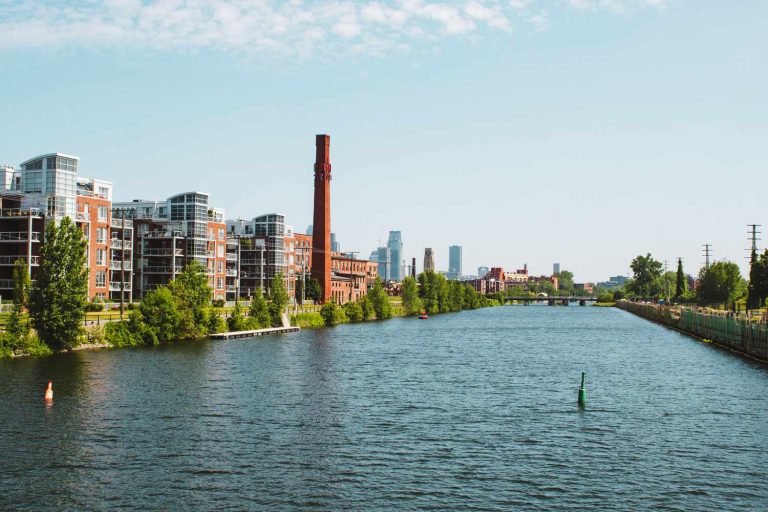
In Montreal's southwest, my real estate agency is Realta!
Does Le Sud-Ouest appeal to you? You’re right! With its many assets, finding the house or condo of your dreams is a reality. Whether you’re looking to buy or sell, REALTA puts its in-depth knowledge of the local market at your service. Benefit from our expertise for a successful real estate transaction, with complete peace of mind. Find out more about REALTA, your Sud-Ouest real estate broker.

Information sources and useful links
- South-West Borough Hall
- Accès Montreal South-West Office
- Coalition de la Petite-Bourgogne/Quartier en santé
- Table de concertation du quartier
- Action-Gardien de Pointe-Saint-Charles
- Concertation Ville-Émard/Côte St-Paul
- CDC Solidarité Saint-Henri
- Comité d’éducation aux adultes de la Petite-Bourgogne et Saint-Henri (CÉDA)
- Éco-quartier Sud-Ouest
- Maison Saint-Columba
- Prévention Sud-Ouest
- Famijeunes
- Carrefour d’éducation populaire de Pointe-Saint-Charles
- Bottin des organismes du Sud-Ouest
- Directory of over 230 non-profit organizations – Le Sud-Ouest
- Borough’s official Facebook page
- Tourisme Montreal – Sud-Ouest Section
- TripAdvisor – Le Sud-Ouest
- Art Public Montréal – Le Sud-Ouest
- Tastet – Restaurants de la rue Notre-Dame ouest
- Tastet – Restaurants de la Petite-Bourgogne
- Tastet – Restaurants de Saint-Henri
- Silo 57 – Restaurants and bars in the Sud-Ouest
- Sud-Ouest cultural programming
- Important historical site in the area – La Guinguette du Sud-Ouest
- Summer festival on the banks of the Lachine Canal
